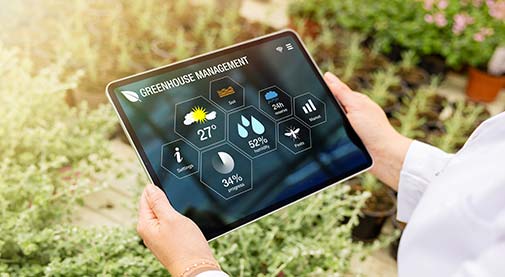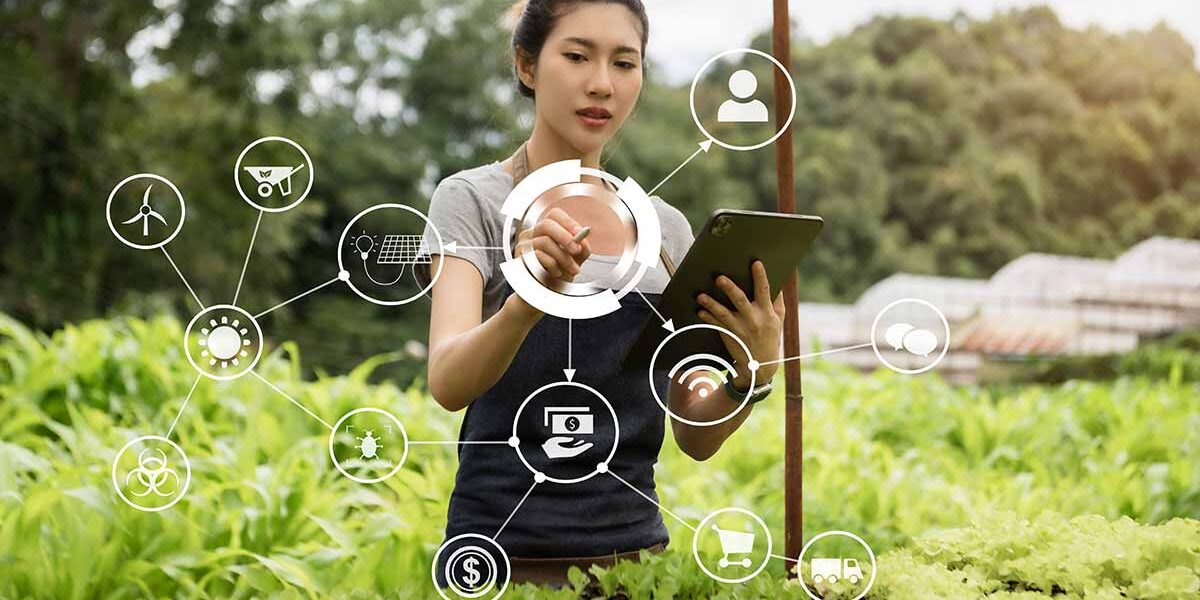The potential of IoTis discussed in a report released by the McKinsey Global Institute (MGI), which covers both developed and developing nations. According to their study, IoT would economically influence various sectors and businesses of over $11.1 trillion a year until 2025.
In recent years, the agriculture industry has undergone a significant transformation with the adoption of IoT technology. IoT solutions have enabled farmers to monitor the health of their crops in real time, making it possible to identify potential issues before they become major problems. One area where IoT is proving particularly useful is in crop health monitoring.
This blog is about IoT’s roles in crop health monitoring and how it helps the agriculture sector. So, if you’re looking to invest in smart farming, consult an IoT Services provider for enhanced solutions in the agricultural sector. Here we go:
What is smart farming?
Smart farming, which is also known as Smart Agriculture. It lets farmers have better monitoring over the raising livestock and growing crops. Referring to technical terms, “Smart Farming is cutting-edge technology that delivers foods and seeds purely and is positively tolerable for the masses.” It makes use of contemporary information and communication technologies.
A method that automates the complete irrigation system by employing sensors to monitor crop fields, including soil moisture, humidity, light, temperature, etc. Farmers can keep an eye on their fields from anywhere with this method. Compared to conventional farming, IoT-based farming is a clever and incredibly effective strategy.
Also read:Smart Agriculture: Top Applications of IoT in Agriculture
Implementation of an IoT solution helps you to:
- Gather live data and statistics in real-time
- Provide a globally accessible solution, not limited to local networks
- Simple installation, low power consumption, and economical.
Addressing conventional and big farming operations, the effect of IoT-based smart farming will increase the ante for popular agricultural trends, including organic farming, family farming, and increasing farming transparency. Additionally, it will increase productivity, make optimal use of water storage, optimize farming inputs and treatments, and conserve labor and power.
Role of IoT solution in crop health monitoring:
IoT has the potential to change the agriculture industry in various ways. It plays various key roles:
Role of IoT solution in crop health monitoring:
IoT has the potential to change the agriculture industry in various ways. It plays various key roles:
Reduce human labor:
Agriculture has always been a labor-intensive industry, requiring constant monitoring and management of crops to ensure optimal growth and health. With the advent of modern technology, this has changed. Automated crop monitoring systems have dramatically reduced the amount of human labor required to oversee crops, leading to reduced labor costs and a significant decrease in the likelihood of human error.
In real-time, these systems are designed to collect and analyze data on plant growth and health, soil quality, moisture levels, and other important factors, enabling farmers to make informed decisions about their crops.
By leveraging these automated systems, farmers can allocate their time and resources more effectively, allowing them to focus on other important tasks related to running their farms. Overall, automated crop monitoring systems have revolutionized the agriculture industry, making it more efficient, cost-effective, and sustainable.
Maintain historical records:

Maintaining historical records of changes in environmental factors can enable better decision-making and informed predictions. By keeping track of changes over time, it becomes easier to identify patterns and trends that can help optimize processes and improve outcomes. This data can also be used to create models that can predict future changes, enabling proactive measures to prevent problems before they occur. Overall, accessing historical records of environmental data is essential to effective decision-making and can lead to more efficient and sustainable practices.
Receive real-time alerts:
Real-time alerts provide an efficient solution to prevent crop loss by notifying farmers of any infestations, diseases, or critical changes in environmental conditions affecting the crop. With immediate notification, farmers can take prompt action and implement necessary measures to minimize the damage, thereby reducing the response time and increasing the chances of crop survival. This technology allows farmers to avoid potential threats and stay proactive in their crop management.
Monitors crop from anywhere:
Remote stakeholders can be looped in by providing access to crop conditions from anywhere and making informed decisions. This enables them to keep track of crop growth, health, and other important factors without being physically present on the farm. The ability to access data remotely can improve collaboration and facilitate quicker decision-making. This can be especially helpful when experts need to be consulted or when multiple parties are involved in decision-making. Additionally, remote access can help save time and resources, eliminating the need for physical visits to the farm to gather data.
Wrapping up
Farmers have been able to close the gap between crop quantity, production, and efficiency thanks to IoT solution . Making rapid and efficient business choices with the least amount of crop loss is made possible by the real-time data obtained, collated, and imported from several sensors and saved in the database.
The inventory is delivered to the store as soon as possible thanks to swift production and reduced turnaround times. Many thanks to improved business process execution and optimized intelligent procedures.



